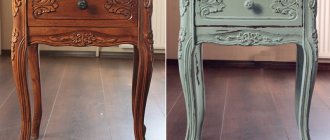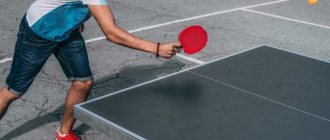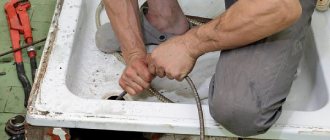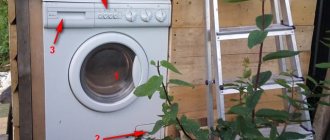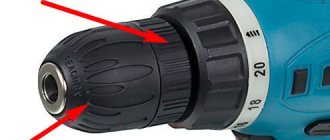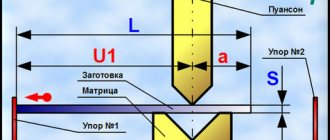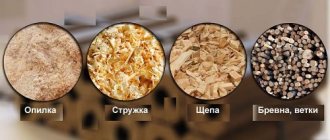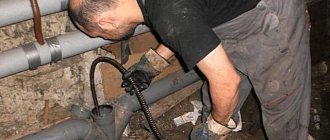When renovating, it often becomes necessary to remove the old layer of plaster. It is impossible to do this by hand, without a special tool.
You need to carefully prepare for work, stock up on personal protective equipment, cover all objects and more.
To learn how to quickly and independently remove plaster from walls at home, read the article.
Preparation
Before you start removing a layer of plaster from the walls, you need to prepare. Regardless of the chosen method of dismantling the old coating, this process is always associated with the formation of a large amount of dust, which must be taken into account before starting work.
Preparation consists of the following steps:
The room is de-energized.- They twist sockets, switches, lamps, and a chandelier (it is removed if the plaster is to be removed from the ceiling). The resulting holes are covered with masking tape.
- Protect the floor covering from construction dust and dirt. If the layer of plaster is thick, it will fall in heavy pieces. Therefore, first, corrugated cardboard is laid on the floor, which is covered with plastic film on top.
- Window sills are covered with newspapers or thick fabric, pressing them with a weight so that they do not fall to the floor.
- Interior doors are covered with stretch film. When carrying out work, the gaps between the doors and the floor are sealed around the perimeter with masking tape. This will prevent dust from spreading throughout the apartment.
- Cover the windows with polyethylene, leaving a small hole to allow the room to be ventilated.
- They take out all the electronics so that dust that gets on them does not lead to damage. The remaining furniture in the room is covered with film.
You should not be lazy and ignore the preparatory stage, so that after completion of the work you do not have to painfully collect dust from all surfaces.
Whether or not to remove old plaster from walls
The finish consists of different materials that rest on the plaster. Decorative stone, facing tiles and wood are equally subject to the general rule. The quality of the initial coating often directly determines the appearance of the surface and the result of the work. That’s why it’s important to figure out how to remove plaster from a wall.
The property of adhesion to other materials and maintaining evenness are important. Then the condition of the original foundations is checked separately. They must withstand new loads, not crumble or collapse under the influence of the next layer of finishing.
This is a labor-intensive process, but it is possible to avoid removing plaster from the walls only in certain situations:
- Plasterboard bases are combined with old plasters. But then not only the finishing should bear the load, but the walls themselves too. Dowels with self-tapping screws of greater length are selected so that at least half of their own length goes deep into the wall;
- The above recommendations are also suitable if different types of panels are used, with wood or mirror, plastic. In all other cases, you will have to figure out how to remove plaster from the walls with your own hands.
How to remove old coating?
To remove plaster from the wall, you can use a percussion tool in the form of a chisel, hammer or hammer drill . If the plaster layer is thin, use a grinding or vibrating machine. In the absence of power tools. They resort to using a scraping spatula.
Chisel and hammer
You can get rid of a layer of plaster using available tools in the form of a chisel and a hammer. It’s easy to work with them, the main thing is to control the force of the blow. If you hit the chisel too hard, you will leave nicks on the wall that will have to be smoothed out.
Procedure:
- divide the walls into small fragments - to do this, lean the chisel against the wall vertically and hit it with a hammer;
- when the outline of the fragment is knocked out, the chisel is tilted at an angle of 45 degrees, inserted into the groove and tapped on it with a hammer;
- As the elements move away, the chisel is moved forward.
This method is suitable for removing plaster of medium to significant thickness.
Grinder
It is best to use a grinding machine to remove decorative coatings that have been applied in a thin layer.
Mode of application:
- Choose an attachment in the form of a brush or coarse sandpaper.
- Put the device into operating mode and sand the coating.
- You need to control the work visually, continuing sanding until the base becomes visible.
Sanding produces a significant amount of dust, so whenever possible, use a tool with a built-in dust collector. If it is not there, the wall must be wetted before work begins.
Hammer
You can quickly cope with the task using a hammer drill. To do this, you will need a tool with attachments in the form of blades of different thicknesses.
Mode of application:
- the device is put into working condition;
- set the crushing mode on the hammer drill;
- lean it against the wall at an angle of 80 degrees;
- they pierce the plaster to the full depth, right to the very foundation, and make a groove;
- tilt the hammer drill at an angle of 40 degrees, insert it into the groove, knock down the plaster, moving in the desired direction.
A hammer drill is used to remove a thick layer of plaster.
Vibrating machine
A vibrating machine is great for removing thin layers of plaster. Its working surface is represented by abrasive materials of different grain sizes. The coating is removed by small but very frequent movements of sandpaper along the surface of the wall.
No special skills are needed to operate a grinding machine. It is enough to plug it into the network, attach it to the wall and systematically work it until the plaster is completely removed.
Roughing spatula
A scraper is an affordable tool for removing plaster. Working with it, you will be able to carefully clean the wall without damaging its base. A spatula is used to remove medium thickness coatings.
Mode of application:
- Using the corner of a spatula, make small notches over the entire area of the wall.
- Starting from the most convenient side, remove the plaster, gradually moving forward. Hold the tool at an angle of 30-45 degrees.
- Sometimes you can tap the handle of the spatula with a hammer to drive it deeper under the base.
The advantage of using a spatula is that the work will be carried out quietly and with a minimum amount of dust.
What are the cleaning methods?
Sometimes after construction work, the brickwork needs to be cleaned of paint, plaster, or the remains of concrete must be removed from it. There are several types of cleaning that allow you to wipe away dirt from the structure:
- mechanical - cleaning of sand-lime brick;
- washing with water;
- use of special solutions.
To clean a brick wall from foreign material, you need to prepare in advance the following tools:
- metal scraper, brush, spatula, chisel;
- bucket;
- drill with replaceable attachments;
- gauze mask or respirator;
- gloves.
From white plaque
The salts that the cement mortar contains penetrate the surface of the brick and cause the appearance of a white coating on the masonry. It occurs after heavy rainfall. This phenomenon is dangerous because it can destroy the top layer of materials: cracks and chips appear. You can wash a brick facade from this plaque with a special blasting - a highly concentrated substance that is diluted with water, maintaining a ratio of 1:10. After this, they proceed according to the following algorithm:
- The liquid is applied with a brush to the red brick.
- Leave for 20-30 minutes to absorb.
- Wash off with clean water. This type of cleaning of brick walls from efflorescence is considered the most effective.
Cleaning bricks from grout
To wash off contaminated areas from facing bricks without difficulty, it is better to do this on the first day. Then, for removal, the wall is wetted and the residue is removed with a spatula. Cleaning the facade in this way is quick and without harm to the material. If the grout on the surface of the decorative brick is ingrained, proceed according to the following scheme:
- Select a special blasting agent and dilute it according to the instructions.
- Apply to the surface and leave for the required time.
- Remove the residue with a spatula.
From plaster
A popular method of decorating brickwork is applying plaster. However, such a coating requires updating over time, and the old material must be completely removed before cleaning. Here's how to properly clean your walls:
- Remove all furnishings from the room.
- Close doors and windows tightly to prevent dust from entering other rooms.
- Use a chisel and hammer to remove cement from the brick.
- Wipe the surface from dust.
- Apply special varnish.
After completing the work, it is necessary to wash the facing brick from any remaining dust. The washing procedure must be performed in the direction from the top corner. There is also a special cleaner for cleaning walls from plaster, but it takes longer and does not guarantee complete removal of material residues. Decorative, three-dimensional plaster containing gypsum can also be placed on the surface of the masonry material.
From cement
After completing construction work, it is necessary to clean the brick facade from the remains of the cement-sand mixture
To choose how to clean the masonry, you need to pay attention to the degree of contamination of the structure. It is best to clean bricks from mortar in the first 24 hours after contamination.
There are two ways to clean a building:
- Mechanical option. Involves treating the surface with a metal brush or chisel.
- Chemical method. A brick cleaning agent containing hydrochloric or phosphoric acid is used. Sand-lime brick cannot be cleaned this way.
From different types of paint
Very often, painting is chosen as a decoration for brick walls. However, if you want to lighten the silicate material for the purpose of further renewal, the coloring material must be removed. The method of soaking with vinegar was popular, but after the advent of special solutions it is practically not used. Sandblasting is often used, but it damages the masonry, which may eventually require partial or complete dismantling of the structure. Therefore, it is better to work according to this scheme:
- Scrape off old material.
- Treat surfaces with a special solution against fungus.
- Apply cleaning solution.
- Remove any remaining paint. If the work is carried out indoors, it is better to stick paper on the walls and remove the material with it.
From clay in the form of a solution
Sometimes the brick is “set” on clay instead of cement. This prevents the products from cracking during operation. The building material must be bleached from the rock immediately. While the solution has not hardened, this can be done with a dry cloth made of natural fabric. However, if the rock has dried out, you need to act differently. Clay mortar masonry is tidied up using the same technique as when cleaning a cement-sand mixture.
Removal from the ceiling
Removing plaster from a ceiling is more difficult than removing plaster from a wall. A person will have to perform work in a position where his arms are always raised up. This requires more time and physical effort.
The choice of tool depends on the thickness and composition of the plaster applied to the ceiling, but there is one universal method to make the work easier.
To do this, you need to prepare a special solution that softens the coating. For 1 liter of water take 2 tablespoons of starch, which is mixed until completely dissolved. The resulting solution is used to treat the ceiling.
Under its influence, the plaster will become looser and it will be easier to remove it from the wall surface. After 15 minutes you can start cleaning. The work will go much faster.
If the layer is dense, then irrigation with starch solution can be repeated when the top soaked plaster is removed.
Video description
This video will show you how to clean bricks from cement mortar:
Soot
Soot is removed from bricks only with a foam solution. It can be made from soap or washing powder. The wall is moistened with the resulting product. And for this it is better to use a foam sponge. Moreover, the composition does not need to be rubbed in. The surface just needs to be blotted. At the same time, try to apply as much foam as possible to the soot.
Within a few minutes it will turn black. This will serve as a signal that you can start washing the wall. To do this, simply run a damp, clean cloth over it. The soap solution can be replaced with vinegar. In proportion with water 1:1. But then it is better to remove soot with a stiff brush.
You can use special products from the store. It will be slightly more expensive. But aggressive chemistry will remove soot from the surface of the brick much faster and more efficiently.
Other contaminants
Oily stains may appear on the brickwork. Their origins are different. Most often they remain when the wall comes into contact with bitumen or resin. They can be easily removed with turpentine, kerosene or white spirit. To do this, you need to thoroughly wipe the stain with a rag soaked in solvent.
Removing rust from brick Source sdelai-lestnicu.ru
Corrosive stains must be treated with soapy water. It is enough to dilute a little washing powder and the rust stain will instantly disappear. And any manipulations, especially with chemistry, must be completed with clean water procedures.
Features of removal depending on the type of building material
Depending on the type of plaster, the features of its removal from the wall differ:
- The cement coating adheres firmly to the surface and is difficult to knock off, even if the material was applied a long time ago. Its removal is started only when there are no other finishing options. For removal, use a breaking tool, for example, a hammer drill. The layer of cement plaster is most often thick.
Gypsum coating holds strong, but it is prone to cracking when impacted.
Therefore, a breaker tool is used to remove it. If the layer is thick, use a puncher, and if it is thin, use a spatula or chisel.- Decorative coating is most often applied in a thin layer. It does not hold as firmly as a cement-based mixture. Therefore, a grinding or vibrating machine is used to remove it.
- The clay coating must be removed. If you leave it on the wall, then the new decor, for example, wallpaper, will not stick firmly. This type of plaster is prone to breaking and peeling. Therefore, cleaning it will not be difficult. If the area is small, then you can use a roughing spatula or chisel for the work.
- The polymer coating holds firmly due to special additives in the composition. It is difficult to remove it by hand; it is better to use a grinding machine.
Efflorescence-resistant materials
- Clinker brick
is a cladding material with high protective properties. It protects the walls of buildings from rain and snow, and is also particularly reliable and durable. If efflorescence does appear on clinker tiles, it is quite easy to remove it with plain water or weakly concentrated cleaning agents. After removal, the walls are treated with products containing silicones. - The fifth element is a facing brick of very good quality, but it costs much more than usual.
TOP 9 stores where I shop profitably
- Petrovich - construction-trading house
- InstrumTorg
- Leroy Merlin
- Stroylandia- Construction and finishing materials
- OBI - building materials and everything for the home
- Building yard
- Maxidom
- All Tools
- Garage Tools
TOP 7 for goods and furniture for the home:
- Brownie
- Furniture for home
- HomeX - everything for decoration
- Designer furniture
- Furniture and kitchens to order
- 220 Volt - Tools for home
- MVideo equipment for home
Nuances of removal from different types of bases
Depending on the base on which the plaster is applied, the methods for removing it will differ:
- Tree. It is one of the softest and most pliable substrates, so it is better to use a grinding or vibrating machine to process it. The last option is preferable.
- Concrete. This base can withstand any processing, including crushing with a hammer drill.
- Brick. To remove the coating from a brick wall, it is not recommended to use a hammer drill, as it will either get into the seam or slide off the masonry. Therefore, it is better for a non-professional to give preference to a grinding machine and remove the thick layer manually.
- Drywall. Its integrity cannot be violated, so do not use a hammer or punch for the work. It is necessary to start stripping from the corner, carefully separating the exfoliated fragment. To do this, you can use a knife or screwdriver. When the coating gives way, they arm themselves with a scraper, which in appearance resembles a spatula, but its edge is sharpened more sharply. With its help, the plaster is removed by carefully pushing the tool under the coating.
Cleaning methods
Various options for cleaning brick have been developed, each of which has its own scope of application. Sometimes, if the contamination is very strong, you have to combine two or more methods. A water jet supplied under pressure effectively removes salt crusts and other stains. Existing systems can supply water at a pressure of 15-220 bar. Although this pressure is high, the technology has been developed so well that the material is not damaged, and in addition, it is environmentally friendly.
Instead of water, jets of sand can also be used. Devices that supply it can guarantee the release of bricks from the following contaminants:
- old dyes;
- bitumen;
- fuel oil and other petroleum products;
- mold stains;
- cement splashes and crusts;
- traces of corrosion.
Sand supplied under significant pressure also exerts increased pressure on the surface. This helps remove all inclusions that worsen the appearance of the wall or other structure. Along with the two named options, the mechanical method is quite widely used. It helps to remove all hardened substances, including drips of building mixtures and paints. For work, various hand tools are used to chip away cement mortar and other blockages.
But it is inconvenient to remove very small stains using a chisel, chisel, etc. In addition, they can damage the surface. Therefore, the final processing is carried out using coarse-grained emery. To guarantee a positive result, after abrasive treatment, it is necessary to rinse the brick with a stream from a hose. This will wash away all dust particles. But all mechanical influences, even the gentlest ones, can damage a brick wall. Therefore, chemicals are also widely used. Helps to dissolve blockages:
- phosphorus;
- sulfuric;
- hydrochloric acid.
Personal protective equipment and safety precautions
In order not to harm your own health when carrying out work, you need to take care of safety precautions, compliance with which is impossible without personal protective equipment.
It is not enough to simply turn off the power to the room. It is necessary to study the wiring diagram so as not to damage it during dismantling.
Basic rules:
Construction glasses should be worn over the eyes, which fit tightly to the face and prevent fine dust from entering the mucous membranes;- protect the respiratory system with a respirator - it will catch dust, preventing it from entering the respiratory tract;
- clothes should have long sleeves - you need to work in pants made of thick material;
- protect your feet with hard boots so that heavy pieces of plaster cannot cause a bruise or fracture;
- If the plaster will be removed from the ceiling, it is necessary to use a hard hat.
How to remove decorative plaster from a wall with your own hands
Of the most popular tools, users will need:
- Special types of machines that remove plaster layers;
- Hammers;
- Metal brushes;
- cycle;
- Scrapers with spatulas;
- Hammers;
- Chisels. It is recommended to choose options with the longest handles. Then the process will be quick.
There are additional devices without which work is impossible:
- Spray;
- Damp cloth;
- Bucket with water;
- Film.
The walls must be constantly wetted, and in the final stages they are simply cleaned of accumulated dust. The bathroom excludes such requirements.
Methods for removing plaster using hand tools
These methods compare favorably with others due to the small amount of noise. There isn't much dust either. And no expensive tools are required.
The recommendations will look like this:
- First, you can tap the plaster layers with a hammer, which have begun to fall off in whole layers. Gypsum material is no exception.
- At the next stage, the edges are pryed up using a spatula. To drive it deeper under the plaster, they also go over the tool with a hammer. Then there are fewer problems with large layers breaking off. It is recommended to periodically moisten the surface with water so that not so much dust is formed. If something does not lend itself to a spatula, such areas are left for later, for other methods. Decorative material often requires that dismantling be carried out with special tools.
Old plasters come off with the same quality from concrete and brick bases. But what to do if drywall is used for the base function? The main thing is not to violate the overall integrity of the material and the paper layer. Then the hammer doesn't help. It’s better to start from some corner and pick out part of the coating with a knife. Then they move on to using cycles. The tool differs from a regular hammer only in its pointed end. So the putty is gradually lifted out, driving deeper and deeper under the solution. A chisel is also acceptable, but it is important for it to maintain an acute angle.
Chisels and hammers are needed if sufficiently large forces are applied. This option is suitable for materials that hold quite tightly. The surface is divided into small fragments to simplify the work. You have to knock while continuing to move in one direction.
The use of special hatchets when removing materials is one of the oldest methods. A wooden house is processed according to the same rules.
Dismantling methods using power tools
The issue is solved with the following devices:
- Bulgarian. Electric drill with chiselling mode;
Hammer drill
It is acceptable when layers of old mortar that are not capable of boasting high power are removed. The blows of this instrument are characterized by frequent blows with low power and amplitude. Such drills can even pierce bricks with the right approach.
The layered layers are removed completely or cut into fragments using various nozzles. The work is performed with metal bristles or cup attachments. The use of drills with a brush helps to completely clean the surface and get rid of the thin old layer. The same rules apply if loft is being processed, square meter and area do not matter.
This is an angle grinder or grinder. Some of the attachments on this tool are just right for removing different types of plaster finishes. In this case, abrasive wheels or brush attachments are combined with gypsum compounds, loose and sandy coatings.
The grinding machine performs the so-called “grinding”. It has special rollers with teeth in the sole. When they rotate, only the old layer of material needs to be removed. There is another attachment - a scraper, which also helps to cope with the work. Even a beginner can easily clean the surface using this method.
Hammer
Getting rid of plaster with a hammer drill is the easiest way. Nozzles that look like blades are used. The tool must be set to crushing mode. When placing the spatula on the surface, maintain an angle of 80 degrees. Then the thickness is pierced to the very base. The next tilt is 30-40 degrees, when the tool is re-driven into the mass. The method is simple with durable plaster compositions.
If the work is periodic at the everyday level, then amateur varieties of the tool are sufficient. Professional devices are purchased if more frequent and strenuous actions are required, and something needs to be cleaned constantly.
Dust-free methods
The surface requires moisture, which is provided by sponges with water or sprayers. The layer of plaster will swell after some time, then it can be easily removed using any hand tools. The wall will need to be re-wetted while the work is being done.
Less commonly used is a practically water-jet type of machine with low pressure. Such a tool may cause too much moisture to form on the floor. This is an expensive type of equipment, relevant for professional builders who clean surfaces.
How to clean a brick wall
The first step is to get rid of the plaster from areas where it has ceased to stick at all. Simply tapping with a hammer is enough to obtain information about the surface and its condition. Muffled sounds indicate that peeling has begun. If the sounds are ringing, it means that the adhesion of the old composition is strong.
Work begins with chisels and chisels, chisels, hammers, and other large devices. The plaster is cleaned until the brickwork shows itself. Then they process it as they go. Chisels and chisels fill the gap between brick walls and plaster parts.
If processing with the simplest tools is unsuccessful, they switch to hammer drills that have special attachments. Dividing walls into fragments is simplified thanks to a grinder with a disc that processes stone. The chisel and hammer drill work the part upwards after dividing the plaster into elements. A primer is needed where there is no plaster on the brickwork. You need to wait at least a day until everything dries. Tiles also require removing the top layers.
How to quickly remove from concrete
Medium and narrow spatulas will simplify processing. Use scrapers made of metal, the edges of which are well cleaned. Cleaning walls is easier if you have a sander. On the nozzle there is sandpaper with large cells or a diamond bowl. But with this process, too much dust appears. It will be easier for the owner to protect himself from injury if he uses special clothing. Then cleaning will be much safer.
How to remove old plaster from a wooden wall
Previously, wooden houses could not be plastered without reinforcement elements. They took available materials, such as metal mesh or shingles. Hammers with chisels of the usual type are used to beat off pieces in which flaking has already begun. If the reinforcement is replaced, a wide furrow is made in the vertical direction, processing the middle. The plaster should be removed along with the mesh to hold it in place.
How can construction waste be used?
After removing the plaster, a significant amount of debris is generated. About 15 kg of material and even more are removed from each square meter.
Tips to make your work easier:
- So that after completion of the work you do not have to spend several days cleaning, it is better to do it immediately, as dismantling proceeds.
- Do not fill bags to the top. Otherwise it will be impossible to lift them. In addition, heavy weight can cause the container to burst.
- A dustpan and broom are used to rake up debris. Do not use a vacuum cleaner, as the plaster can damage the equipment.
- To remove garbage, you need to hire a special car, since management companies are not obliged to deal with this procedure.
Plaster is not always a useless material. Even after being removed from the wall, it can be reused. It is used to fill the foundation for pouring a porch, to improve an area for parking a car, and to level garden paths. This is especially true for owners of country houses and dachas.
Clay plaster can be completely reused. Just soak it in water and mix thoroughly.
Gypsum coating is used as insulation in outbuildings. Lime plaster can be used to cover the soil in areas where weeds grow.
Briefly about the main thing
Removing hardened mortar from brick seems difficult only at first glance. In fact, the cement will easily come away from the base if you soak it first. For these purposes, it is necessary to generously fill the surface with water and let it sit for some time.
In special cases, you can use aggressive chemicals. Acids penetrate deep into the pores of hardened cement in a matter of minutes and destroy its structure. All that remains is to use a scraper or a stiff metal brush to remove the remaining solution.
But the best way to deal with the problem is a sandblaster. Abrasive powder, flying out of the nozzle under high pressure, cleans the surface of the brick to an ideal state. Moreover, not only old cement will be removed, but also any contamination. From salt deposits to oil stains.
Ratings 0
What not to do and why?
When removing plaster from a wall, do not do the following:
- You should not start repairs without personal protective equipment;
- It is unacceptable to remove a thin layer of plaster with a percussion tool;
- when working at heights, it is not recommended to use a stool or table; it is better to purchase a construction ladder - there is no need to place it close to the wall, since broken fragments will fly into your face;
- The power tool should not be left turned on for longer than 20-30 minutes - failure to comply with this recommendation will lead to its overheating and failure; the break should be at least half an hour so that the equipment has time to cool down.
Articles on the topic
Expansion joint in a brick multi-storey building, instructions, advice from masons
Columnar brick foundation - technology, disadvantages, instructions, advice from masons
Brick partitions - preparation, construction, instructions, advice from masons
How to rebuild a brick house - options, techniques, instructions, advice from masons
Skirting on a brick wall - is it necessary, how to fasten it, instructions, advice from masons
Waterproofing a brick plinth - horizontal, vertical, instructions, advice from masons
Cladding a house with bricks - how to calculate how much material is needed, instructions, advice from masons
Installing a bathtub on bricks - what materials are used, instructions, advice from masons
Reviews ()
Helpful information
Tips for removing plaster from a wall:
Gypsum and lime coatings are susceptible to moisture, so it is recommended to moisten them generously with hot water before removing them. It will take about 20 minutes to soften, after which the work will go faster.- A thin layer of plaster is moistened using a spray bottle. If its thickness exceeds 6 cm, use a roller, rag or sponge.
- If you need to do the work quietly and with minimal dust formation, use a chisel and hammer, or a spatula.
- If the processing area is impressive, it is better to use a power tool.
- Garbage must be removed immediately so that it does not interfere with movement around the room and does not cause injury.
Anti-pollution vacuum cleaner on a brick wall
A vacuum cleaner is suitable for cleaning.
It’s worth mentioning right away that a regular vacuum cleaner is not suitable for this method. You will need a detergent here. This cleaning method will resemble the traditional one, only a vacuum cleaner in this case will replace the nylon brush. First, you will need to moisten the contaminated area, apply a paste of powder, salt and water to it, leaving it all for 15-20 minutes. After time, the dirty foam is removed using a vacuum cleaner.
For cleaning to be effective, two conditions must be taken into account:
- before using the vacuum cleaner, you will need to change into special clothes, since the work itself will be quite dirty;
- This cleaning method is not suitable for old brickwork, since jets of water will simply destroy it.
Adviсe
After such work there is always a large amount of construction waste left. On average, one wall produces 15-25 kg of waste. It’s better to immediately take special bags and put all the waste in them. But you shouldn’t fill these containers to the top, otherwise it will be impossible to lift them later. In apartment buildings, it is customary to hire special machines to get rid of garbage, then the work complies with accepted norms and rules.
Cement-sand plaster scrap is often reused. For example, for various country houses and extensions. Clay is also a good natural material that can be reused. Plaster material will always find application.
Even construction waste can always be put to good use. It is enough to ensure that it folds only in specific places. Only at first glance it seems that removing plaster is difficult. You just need to adhere to all technologies and recommendations from the builders and manufacturers themselves.

